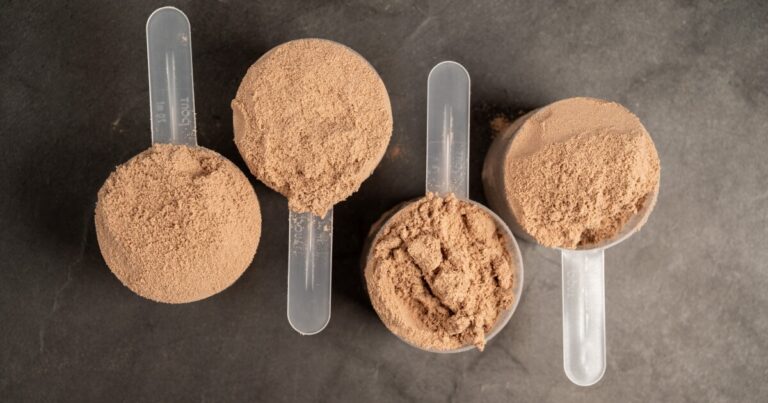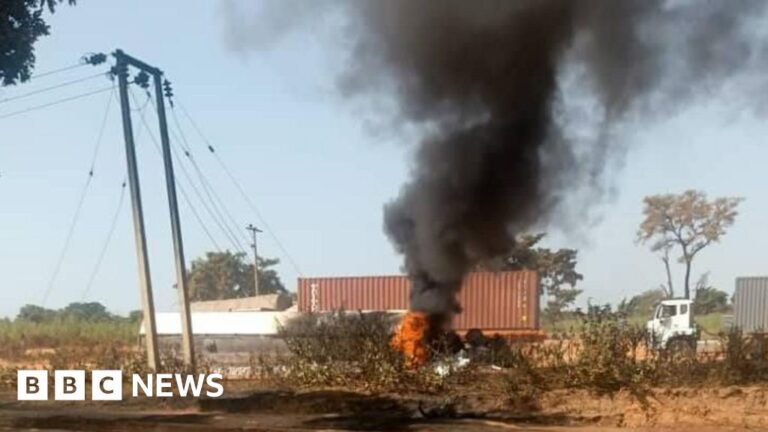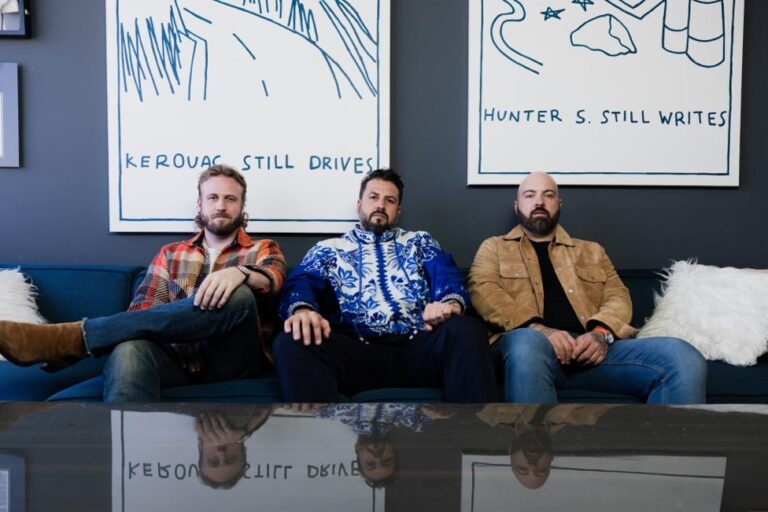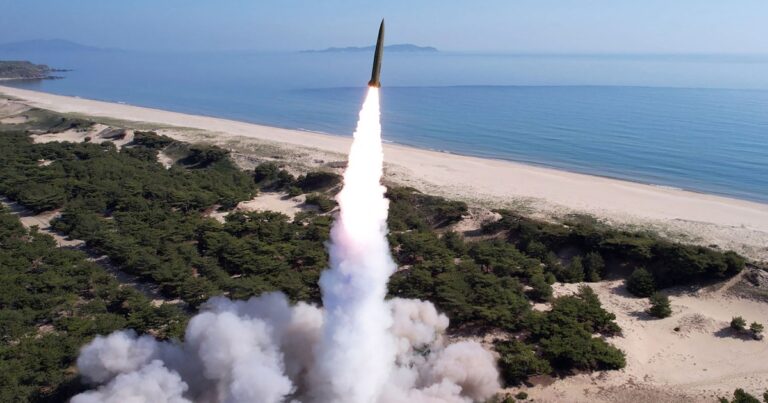
Lithia Motors beats Q3 expectations with record revenue, shares rise
Lithia Motors Exceeds Q3 Expectations, Achieves Record Revenue with Increase in Share Price
Hubi Kos Reflects on Perfect 6-for-6 Performance at Two Stops: “This is All About Enjoying the Moment”
By Coleman Hodges on SwimSwam

2025 WORLD AQUATICS SWIMMING WORLD CUP – Westmont
- October 17-19, 2025
- Westmont, Illinois
- SCM (25 meters)
- Meet Central
- Psych Sheets
- Live Results
***Sorry for the audio quality, we made a technical error when capturing some of them***
Through the first two stops of the World Cup, Hubi Kos is undefeated in backstroke, having won the 50, 100, and 200 in Carmel and Westmont. After his races in Westmont, the Hungarian champion spoke on his Texas training partners, his potential NCAA lineup, and chasing SCM world records.
HOW TO WATCH THE WORLD AQUATICS WORLD CUP
A comprehensive look at television and streaming options for the meet can be found here.
U.S. viewers can watch both prelims and finals on the USA Swimming Network and Peacock, Canadians can stream every session on CBC, and the source for the majority of European nations will be the Eurovision Sport platform.
The competition will also be streamed live and on-demand with the World Aquatics Recast channel. A three-day pass requires 590 credits, which costs $8.26 USD.
Read the full story on SwimSwam: Hubi Kos on Going 6-for-6 Through Two Stops: “This for me is all about having fun”
New Study Uncovers Harmful Lead Present in Widely-used Protein Powders
When choosing a protein powder, we generally want it to be low in sugar and carbohydrates, and to not taste terrible. We don’t even consider that it might also be packed with dangerously high levels of lead. But this is what a new report has found, analyzing 23 popular protein supplements on US shelves.
In a new Consumer Reports (CR) investigation, a team of researchers tested 23 protein powders and ready-to-drink shakes from popular brands, finding that heavy metal contamination is more common than traditionally thought, flagging new concerns about how healthy these health products actually are.
“It’s concerning that these results are even worse than the last time we tested,” said Tunde Akinleye, a CR food safety researcher who led the project. “This time, in addition to the average level of lead being higher than what we found 15 years ago, there were also fewer products with undetectable amounts of it. The outliers also packed a heavier punch. Naked Nutrition’s Vegan Mass Gainer powder, the product with the highest lead levels, had nearly twice as much lead per serving as the worst product we analyzed in 2010.”
Plant-based products fared the worst, most likely due to how crops absorb heavy metals from the soil, and the amount of concentrated ingredients that make up this type of supplement. The plant-based products all centered on pea protein, which has become increasingly popular in recent years. Two of the powders CR tested had so much lead that researchers advise consumers to avoid them altogether. One serving (usually one or two scoops) contained between 1,200% and 1,600% the “level of concern” for lead (0.5 micrograms per day). Two others had 400% to 600% of that 0.5 μg daily amount. Overall, the lead levels in plant-based powders were nine times higher than those found in whey protein supplements and twice as high as beef-based products.
Dairy-based powders and shakes had the lowest amounts of lead, however, half of the products had levels high enough that the researchers advise against daily consumption. The primary sources of heavy metal contamination in the cow’s environment, said Akinleye, are feed, water and soil.
“For many people, there’s more to lose than you’re gaining,” says Akinleye, who suggests that protein-powder enthusiasts aren’t at risk of immediate harm but should perhaps reduce their consumption.
Undertaking their testing project, CR researchers sourced several samples of each product from different stores over a three-month period from November 2024. Samples from multiple batches of each of the 23 different products were analyzed to assess total protein, arsenic, cadmium, lead and other elements. The results were averaged, but researchers also note that the findings may not be a precise reflection of what’s currently on offer from the companies given the time lag. (For more details on the testing methods, see the methodology sheet).
One positive is that all products contained the advertised amount of protein, or more (20-60 g a serve). But it was the lead levels that stood out across the board. Around 70% of products had more than 120% of CR’s “level of concern.” Three products also exceeded “level of concern” amounts for cadmium and inorganic arsenic.
Naked Nutrition’s Mass Gainer powder contained 7.7 μg of lead per serve, or 1,570% of CR’s level of concern. Huel’s Black Edition powder contained 6.3 μg of lead, or 1,290% of the level of concern. Meanwhile, Garden of Life’s Sport Organic Plant-Based Protein and Momentous’ 100% Plant Protein had between 400% and 600% the level of concern lead content. The researchers say these should be limited to consuming just once a week.
The one non-plant-based protein powder with more than 200% of CR’s level of concern for lead was MuscleMeds’ Carnivor Mass powder. However, six more plant-based powders, five dairy powders and shakes and one beef powder all had lead above CR’s level of concern.
There’s no hiding from the protein wave that’s hit the health and wellness industry in the last few years, and most of us would consider workout supplements an excellent way to boost muscle building and weight training recovery. However, the need may be overblown, the researchers add. The average adult needs around 0.8 g of protein per kilogram of body weight (0.36 g per pound). For a 170-lb (77-kg) adult, they write, that’s around 61 g of protein – a cup of plain Greek yogurt and 3.5 oz (100 g) of chicken breast or 5 oz (142 g) of tempeh.
And according to CR’s American Experiences Survey of 2,153 US adults, one in four people said they have protein powders or shakes at least once a week, and 42% said they eat protein-fortified foods just as often. But unlike over-the-counter and prescription medication, protein powders aren’t subject to any US Food and Drug Administration (FDA) reviews. There are also no federal limits for the amount of heavy metals in these products.
“The FDA can take action if it finds unsafe lead levels, but the lack of enforceable standards means it doesn’t happen nearly enough,” said Brian Ronholm, CR’s director of food policy. “The FDA’s lack of funding and staff makes the problem worse. Establishing enforceable limits in foods and supplements would go a long way in protecting consumers.”
CR reached out to the companies to respond to the findings, with seven – BSN, Dymatize, Jocko Fuel, Muscle Milk, Owyn, PlantFusion and Transparent Labs – failing to reply, and Optimum Nutrition declining to comment. Equip Foods, Garden of Life, KOS, Momentous, Muscle Meds, Muscle Tech, Orgain and Vega all commented that they test their base ingredients and final products for heavy metals.
“We take our customers’ health very seriously,” said Naked Nutrition’s chief marketing officer James Clark, adding that the company sources ingredients from “select suppliers” that provide documentation of heavy-metal analysis. (The company has since requested a third-party analysis of its Mass Gainer protein powder.)
Vega’s head of food science and regulatory, Maribel Aloria said the company “complies with all required safety standards and regulations” and that the product tested is now sourcing its pea protein from North America, not China.
“Because naturally occurring heavy metal levels in plant proteins can reflect the soil in which crops are grown, this sourcing change is relevant to any testing considerations,” Aloria added.
CR has shared its findings with the FDA, and has urged the regulatory organization to shine a spotlight on protein supplements.
“We will review the findings from Consumer Reports’ testing along with other data we have collected to better inform where to focus our testing efforts and enforcement activities,” an FDA spokesperson said.
In the meantime, the researchers suggest you can limit your lead exposure by reducing the protein shakes you have each week, and skip the products with the highest levels as documented in this report. They also recommend avoiding any products with Prop 65 warnings on display and use the new CR chart in the report as a guide.
“We advise against daily use for most protein powders, since many have high levels of heavy metals and none are necessary to hit your protein goals,” said Akinleye.
They also recommend scrutinizing the products to see if lead tests are available online and swapping out the branded powders for other high-protein sources such as Greek yogurt and peanut butter. And, finally, avoid buying into the “added protein” versions of processed foods and choose products naturally high in the macro ingredient – tofu, beans, lentils, lean meats, eggs, for example.
“Protein mania is rampant,” said Nicholas Burd,a professor of health and kinesiology at the University of Illinois Urbana-Champaign. “If you [have] a healthy eating pattern, there’s certainly no reason you need an isolated food protein.”
Source: Consumer Reports
63 people killed in bus collision on highway near Kampala, Uganda’s capital
Two buses travelling in opposite directions on the Kampala-Gulu Highway collided head-on while overtaking.
Published On 22 Oct 2025
At least 63 people have been killed in a major road accident involving multiple vehicles on the highway between Uganda’s capital Kampala and the northern city of Gulu, police have said.
The collision took place just after midnight [21:00 GMT on Tuesday] and was caused by two buses coming from opposite directions trying to overtake a truck and a car.
Recommended Stories
list of 3 itemsend of list
“In the process, both buses met head-on during the overtaking manoeuvres,” the Uganda Police Force said in a statement on X. “Sixty-three people lost lives, all occupants from involved vehicles.”
The police added that “as investigations continue, we strongly urge all motorists to exercise maximum caution on the roads, especially avoiding dangerous and careless overtaking, which remains one of the leading causes of crashes in the country”.
Those travelling in the truck and the car were injured and taken to Kiryandongo Hospital and other nearby medical facilities, the statement said. It did not give further details on the number injured or the extent of their wounds.
The Kampala-Gulu Highway is one of Uganda’s busiest as it connects the capital with the biggest town in northern Uganda.
Texas Company Defies Climate Change Ban and Trump’s Annexation Desire to Drill for Oil in Greenland
Veteran oilman Robert Price was regaled with stories of dogsledding and adventures in Greenland as a child from his father who served as a military weatherman there during World War II.
Those stories kept the massive, icy North American territory in his mind until this year. After a series of still-pending deals, Price will soon become the CEO of Texas-based Greenland Energy, the first publicly traded company created to drill for oil onshore in Greenland, The first well is tentatively scheduled for next summer.
Pristine Greenland is potentially home to one of the world’s largest oilfield reserves. But it’s also the sparsely populated territory that U.S. President Trump wants to annex for strategic geopolitical and military purposes—very much against the wishes of Greenland and the Kingdom of Denmark that oversees the autonomous territory. Greenland, with its rapidly melting ice sheet, also is an example of global climate change largely caused by fossil fuels. And the project is taking advantage of a loophole in Greenlandic law intended to ban oil drilling.
“I’ve drilled for millions of barrels of oil while drilling wildcat wells my whole life, but I’ve never had the opportunity to drill for billions of barrels of oil,” Price told Fortune. “It’s truly an extraordinary opportunity.”
Price and executive chairman Larry Swets aren’t tone deaf. They’re acutely aware of the political and environmental sensitivities that have thrust quiet Greenland into the headlines this year. Their effort is not related to American annexation, they insist, and, while any oil production has an environmental impact, this is a relatively small-scale project in eastern Greenland far away from the population.
“Regardless of the overall political climate out there, I believe that the Greenland people deserve to know whether or not they have one of the largest oilfields in the world,” Price said.
They hope potential investors are enthused enough to agree. There is obvious risk, Swets said, but the potential upside is huge. “This isn’t just a hope and a prayer. There’s a direct link from your capital to potential oil production, and that’s a pretty favorable risk-reward from my perspective,” Swets said.
Price and Swets are betting their costs eventually will prove lower than the industry average because they’re drilling old-school, conventional wells that go straight down—not the modern, complicated horizontal drilling and fracking involved in the U.S. shale boom. However, energy analysts point to the high costs of setting up in a new remote environment in harsh weather without local infrastructure, labor, or equipment. Then there are the added expenses with exporting the oil and gas—the demand is all international, said Lewis Lawrence, senior analyst with the Wood Mackenzie energy research firm. And it certainly doesn’t help that the timing coincides with low oil prices amid a global glut.
“It’s surprising. It’s high-risk, high-reward,” Lawrence said. “They must go after big targets. If it comes through, then it could be an exciting project. There are not many basins globally that are undrilled. But history tells you in Greenland, based on the lack of success so far, there’s also a good chance that it does go bust. That’s why it’s a high-risk, frontier exploration program.”
Long history, lack of results
That history of Greenland oil goes back more than 50 years. Fresh off the massive Prudhoe Bay oil discovery in Alaska in the late 1960s, the Atlantic Richfield Co., better known as ARCO—later acquired by BP—identified offshore Greenland as a top oil prospect in the 1970s.
ARCO and others spent more than $100 million on seismic surveying and assessments of Greenland with plans to develop oil and gas in the territory. But, after some initial drilling pilot programs were unsuccessful, dreams of Greenland’s black gold fell by the wayside when the oil industry infamously went bust in the ’80s.
The scientific case for exploration dates back many millions of years to continental drift when Greenland was believed to be closely connected to Norway and the British Isles. Research has shown that oil seepage from Greenland is comparable to the global benchmark quality of Brent oil from Norway’s mature North Sea.
Smaller efforts popped up in Greenland over the years, but nothing came to fruition. The UK’s Cairn Energy—now Capricorn Energy—abandoned the most recent drilling effort in 2011 after mixed, mostly failed results.
Nearly all of these projects were offshore though, and Greenland Energy is taking an onshore approach. Despite decades of geological study, eastern Greenland’s Jameson Land Basin remains completely undrilled until potentially next summer.
Price and Swets believe Jameson could be the next Prudhoe Bay. They acquired all of ARCO’s historic seismic surveying data for the Jameson region, which helped them hone in on specific drilling locations. Getting the grandfathered drilling licenses—emphasis on “grandfathered”—into one consolidated company is trickier, but manageable thanks to a series of rapid-fire, convoluted deals.
Last year, London-based Bluejay Mining acquired London’s White Flame Energy, changing its name to 80 Mile to reflect the expansion of the business model to include oil and gas.
White Flame was founded over a decade ago to explore for oil and gas in Greenland. No development came to pass, but the company critically won three licenses for exploration in the Jameson basin. The licenses received three-year extensions in 2024 prior to the 80 Mile deal.
Citing climate change concerns and the melting ice sheet, Greenland implemented a moratorium on oil and gas drilling in 2021—seemingly bringing all oil dreams to an end—but the government agreed that White Flame’s licenses were grandfathered and remained valid. The government confirmed the legality of the licenses to Fortune, but declined interview requests.
Seeing an opportunity, Price started Texas-based March GL and, in April, he partnered with 80 Mile for the licenses. March GL leads the operations while 80 Mile keeps a 30% stake in the project.
“We have the only onshore licenses in all of Greenland,” Price boasted.
Thanks to mutual friends at ThinkEquity, Price and Swets met early this year and hit it off. Swets, who has expertise with special-purpose acquisition companies (SPACs), formed Greenland Exploration with his investment and merchant banking firm, FG Nexus, and agreed to merge with March GL and find a suitable SPAC to take the company public.
In September, they agreed to be acquired by a SPAC, Pelican Acquisition Corp., in a reverse merger, which will take the pending Greenland Energy Co. public at a $215 million implied valuation when and if the deal closes.
The only problem is the ongoing government shutdown could delay the intended December closing date to January or so, they said.
Is the oil actually reachable?
This month, the team began landing equipment to start building the 3-mile road from the coast to the first well. Road construction is expected to begin early next year. Next summer, the plan is for a barge to bring over the drilling rig to start the first well. A second pilot well is scheduled for fall 2026.
The team already is contracted with oilfield services giant Halliburton, IPT Well Solutions, and Stampede Drilling.
The aim is to drill the first well slowly, entering five different geologic zones and testing for oil and gas in each of them. “Once we are hopefully fortunate to discover an oilfield, the costs will certainly come down,” Price argued.
A 2008 U.S. Geological Survey report on eastern Greenland estimated there are recoverable reserves of 31.4 billion barrels of oil equivalent, which could make the region one of the world’s top oil and gas basins.
However, while nearby, nearly all the estimated reserves are in offshore waters, and the estimate does not count potential volumes from the nearby Jameson Land Basin. The report specifically states, “The Jameson Land Basin [was] considered to have less than a 10% chance of containing a technically recoverable hydrocarbon accumulation.”
Price contends the Jameson portion of the USGS report is outdate and inaccurate, pointing to a much more recent 2025 third-party review from Sproule ERCE energy consultants that estimates the Jameson basin could hold 9 billion net barrels of recoverable crude oil. The new report contends the first two wells, if successful, could produce more than 1.2 billion barrels of oil combined, with upside of as high as a combined 4 billion barrels.
“We know the oil is there. The question is, ‘Where is it trapped?’” Price said. “This is not a one in 10 shot. This is a very high percentage of discovering what could be one of the largest oilfields in the world.”
Energy analyst Lewis Lawrence finds it interesting that the government extended the exploration licenses last year, despite the moratorium. The political winds in Greenland pushing for independence from Denmark seem to lean more in favor of welcoming the oil sector in some form, he said.
“There seems to be a little bit of flip-flopping internally with Greenland as to whether they want to progress with some kind of oil and gas future or not,” Lawrence said.
And, while Greenland Energy may represent a longshot bid, Lawrence added, “If a big enough discovery were made, then it could compete globally.”
Multiple fatalities while collecting fuel in Niger state
Dozens of people have been killed in an oil tanker explosion in Nigeria’s central Niger state after the vehicle skidded off the road and crashed, spilling fuel.
Villagers rushed to collect fuel from the overturned tanker which suddenly exploded, setting off a massive fire that engulfed them. About 30 people reportedly died, while at least 40 others sustained varying degrees of injuries.
The intense blaze burned many victims beyond recognition, and the injured were taken to a nearby hospital for treatment.
Tanker explosions are a recurring tragedy in Nigeria, despite repeated warnings about the dangers of collecting spilled fuel.
The accident occurred near the Essan and Badeggi communities along the Bida-Agaie road in the Katcha Local Government Area of Niger state.
Nigeria’s Federal Road Safety Corps agency was quoted by the Reuters news agency as saying that at least 35 people had been killed in the crash, while a local coordinator for the National Emergency Management Agency (Nema) told the AFP news agency there were “29 dead and 42 injured”.
Nema officials told the BBC that they were responding to the incident but were unable to confirm the number of people affected.
Niger State Governor Mohammed Umaru Bago sent his condolences to the people, describing the incident as “worrisome, unfortunate and pathetic”.
“[It] is disheartening how people have continued to approach a fallen tanker to scoop its contents” despite several awareness campaigns, said a statement by his chief press secretary Bologi Ibrahim.
The tanker, carrying petroleum products from Lagos in southern Nigeria to the north, is said to have crashed due to the bad condition of the road.
Poor road conditions are a major contributor to road accidents in the country.
In October last year, a fuel tanker explosion killed 153 people in Jigawa state, north-west Nigeria.
In January this year, a truck carrying about 60,000 litres of petrol overturned near Suleja, also in Niger state, killing at least 86 people and injuring nearly 70 others.
Milk & Honey Announces Launch of Record Label, Promising Songwriters a Generous Share of Master Points
Milk & Honey, hitherto best known in the music industry as a songwriter, producer, and DJ management house, is getting into the label game.
The Los Angeles-headquartered company has today (October 21) announced the launch of Milk & Honey Records, which it says will be focused on pop and dance music, with a physical and digital distribution agreement in place with The Orchard.
Milk & Honey, which also runs a sports talent agency and a music catalog M&A brokerage, said in a press release that its new record company will be “the first label to offer songwriters a sizeable amount of gifted master points… giving songwriters as much as double digits worth of points perpetually accounted directly to them as a production royalty”.
The company added that its label will be focused on “transparent marketing commitments”, and would consider single-track recordings deals in the right circumstances.
Discussing the label launch, Milk & Honey founder, Lucas Keller, said: “Today, artists and their managers have become more independent from the major labels and are building tremendous cottage industries, so we decided that now is the right time for us to enter the space. Milk & Honey is a house built by songwriters, and the firm has never lost its way in putting them first.”
Directly addressing artists, Keller said: “Bring us your songs that you might have sent to another label where you wouldn’t be given points. You don’t need to be a Milk & Honey songwriter or artist; we want to be in business with you.”
“Bring us your songs that you might have sent to another label where you wouldn’t be given points. You don’t need to be a Milk & Honey songwriter or artist; we want to be in business with you.”
Lucas Keller, Milk & Honey
He added: “We live in a world where the working songwriter has a difficult time deciding what to spend their time on… there are so many artists, and a label model that doesn’t support making the writer as wealthy as the artist, or the company. The way songs are fractured now – with 16 writers and 7 producers – it is nearly financially impossible to be a songwriter.
“Major companies who publish many writers on hit songs are just as successful as always, but in key markets like Los Angeles and Nashville, there are fewer songwriters than ever that make a real living. At Milk & Honey, we’ve always been focused on making this into a big business for each songwriter and producer.”
Brad Navin, CEO of The Orchard, said: “Over the past decade, Milk & Honey has consistently demonstrated an exceptional ability to identify and cultivate talent. Their expansion into the label space is a natural progression that will undoubtedly lead to exciting developments.
“Over the past decade, Milk & Honey has consistently demonstrated an exceptional ability to identify and cultivate talent.”
Brad Navin, The Orchard
“Both The Orchard and Milk & Honey are deeply committed to fostering an environment where creativity thrives. We will leverage our respective strengths and networks collaborating to create substantial value, enhanced exposure, expanded resources, and a wider global reach, empowering artists to connect with new audiences and achieve their full potential.”
Keller has tapped Dana Shayegan to run the label. Shayegan is an industry veteran who spent 20 years across posts at iHeartRadio, Studio71US and The Collective where his music network drove over 1 billion+ views monthly. He was the co-founder of Monk Music, releasing 3,000+ songs across Caribbean and African music.
Continued Keller: “Songwriters are discretionary about who they will give their records to, and in today’s world they have to be opportunistic about who they can make the most publishing money with.
“In the earlier days of streaming, songwriters tried to take royalty points from producers which optically devalued the work that a producer puts into making a master recording and the craft that goes into being a record producer. When there is scarcity, people are fighting for scraps and it’s bad for everyone.
“Instead, the labels should be the ones chipping in points for songwriters. Today, the major labels are blocking songwriters who ask for master points. Even if an A&R approves it, business affairs will block it.”
“labels should be chipping in points for songwriters. Today, the major labels are blocking songwriters who ask for master points. Even if an A&R approves it, business affairs will block it.”
Lucas Keller, Milk & Honey
David Frank, Esq., Milk & Honey’s Head of Artist Management & Sports, said: “Milk & Honey Records is our answer to a changing industry — one where songwriters deserve a seat at the table and artists need faster, more nimble ways to release music. We’re building a label that puts creators first, offering real ownership, transparency, and speed without the red tape.”
Dana Shayegan said: “Lucas, Milk & Honey, and I are all wired the same way. We fight for artists like they’re our family, we love and respect the history of the music business, but we know that tomorrow’s business will never look the same as yesterday’s.
“In that spirit, we’re launching a label that honors proper old-school A&R while also embracing data and new technology to stay steps ahead in artist advocacy and deliver fans the music they want, how and where they want it.”
Commenting on his hiring of Shayegan, Keller said: “I’ve received countless resumes from major label A&Rs who I didn’t believe could enter the new world gracefully. I wanted someone who understands digital and knows how to go deep into the internet to both source research records and break them, and to be scrappy – Dana is that guy and I am excited to have him as part of the next chapter of Milk & Honey.”
Milk & Honey will reach 60 employees by the close of 2025. Its staff includes a 15-person creative team and a 15-person electronic dance music team, plus a staff of synch, media and content, marketing, A&R Admin employees.
The company’s clients received 19 Grammy nominations at the 2025 Grammy Awards.
Recent successes have included client hits such as Doja Cat’s Jealous Type (written & produced by client Y2K), Alex Warren’s Ordinary ( written by client Mags Duvall), K Pop Demon Hunters (client songwriters and producers Jenna Andrews and Stephen Kirk), Ed Sheeran’s Camera (songwriter David Hodges), CharliXCX’s Brat (client and producer Finn Keane), and Post Malone’s I Had Some Help and Guy for That (client, songwriter and producer Hoskins).
Milk & Honey clients also claimed cuts on 23 songs across Justin Bieber’s SWAG I and II (client & songwriter Jackson Morgan), plus Kendrick Lamar and Sza’s 30 for 30 (client producer and songwriter J White).
Additionally, Madonna’s Confessions 2 is coming from M&H client and songwriter Stuart Price later this year.Music Business Worldwide
What Still Needs to Be Addressed in the Gaza Cease-Fire Agreement
new video loaded: What’s Left to Be Done in the Gaza Cease-Fire Deal
October 21, 2025
Challenge from the Client
A required part of this site couldn’t load. This may be due to a browser
extension, network issues, or browser settings. Please check your
connection, disable any ad blockers, or try using a different browser.
North Korea launches several ballistic missiles towards East Sea | Updates on Kim Jong Un
Experts warned N Korea could launch provocative missile tests before or during the upcoming APEC summit in South Korea.
Published On 22 Oct 2025
North Korea has fired multiple, short-range ballistic missiles towards waters off its eastern coast, South Korea’s military said, marking its first missile launch in months.
The launch of missiles on Wednesday morning comes a week before South Korea hosts the Asia-Pacific Economic Cooperation (APEC) summit, which will see Chinese President Xi Jinping, United States President Donald Trump, and other world leaders gather in the South Korean city of Gyeongju for talks.
Recommended Stories
list of 4 itemsend of list
South Korea’s military said that it “detected several projectiles, believed to be short-range ballistic missiles” fired towards the East Sea, which is also known as the Sea of Japan, the official South Korean Yonhap news agency reports.
“Our military has stepped up monitoring in preparation for (the possibility of) additional launches and is maintaining a steadfast readiness posture while sharing relevant information with the US and Japan,” South Korea’s Joint Chiefs of Staff said, according to Yonhap.
North Korea last fired short-range ballistic and cruise missiles towards the East Sea on May 8 and May 22 , meaning the latest launch is the first under South Korea’s new president, Lee Jae Myung, who took office in June, Yonhap said.
Experts had warned that North Korea could launch provocative missile tests before or during the APEC summit to underscore its commitment to being recognised as a nuclear-armed state, the Associated Press news agency reports.
North Korean leader Kim Jong Un earlier this month displayed a new long-range Hwasong-20 Intercontinental Ballistic Missile (ICBM), described as the country’s “most powerful”, during a huge military parade in Pyongyang, with top Chinese, Russian and other leaders in attendance.
The parade, which marked the 80th anniversary of the founding of North Korea’s ruling Workers’ Party, highlighted Kim’s strengthening diplomatic presence on a regional and global level and his consistent drive to build sophisticated weapons capable of delivering nuclear payloads.
Pyongyang has long rejected international bans on its weapons development, which it says is necessary to protect North Korea from potential attack by its enemies, the US and South Korea.
Trump met the North Korean leader during his first term in office, and said recently that he hopes to meet Kim again, possibly this year.
Pyongyang has said that Kim is open to future talks with Trump, but with the caveat that North Korea will never agree to relinquish its nuclear arsenal.









